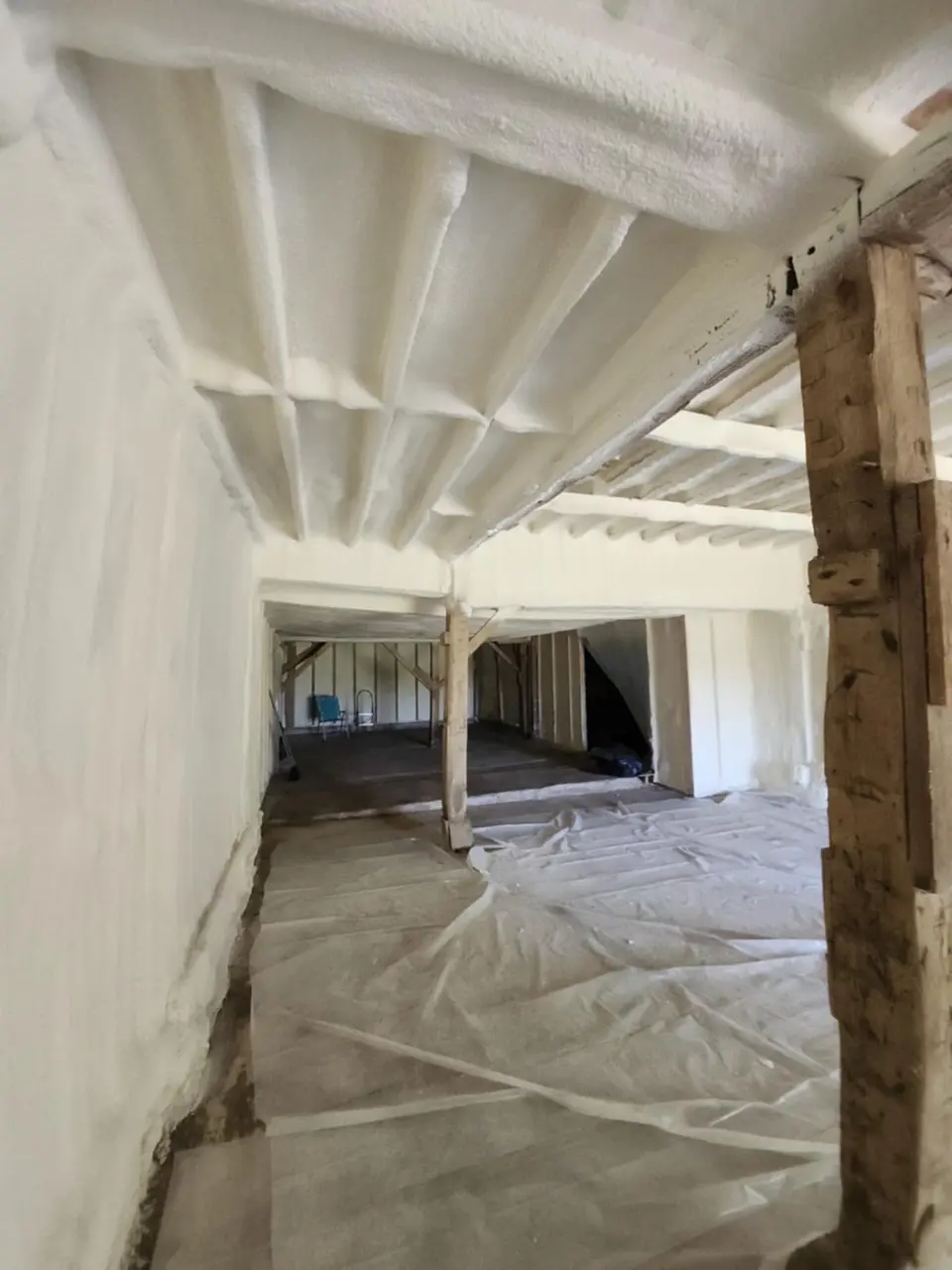Embarking on a spray foam insulation project in extreme weather conditions requires meticulous planning and execution. The challenges presented by harsh environments can have a significant impact on the outcome of the project. In this guide, we will explore the essential best practices to ensure a successful spray foam insulation project, even in the most extreme weather conditions.

Understanding the challenges of extreme weather conditions
Extreme weather conditions such as intense heat, freezing cold, or high humidity can pose unique challenges during a spray foam insulation project. These conditions can affect the curing process of the foam, leading to uneven expansion or contraction, which may compromise the insulation’s effectiveness. Additionally, working in extreme weather requires careful consideration of worker safety and adherence to specific application guidelines to ensure the insulation performs as intended.
One critical aspect to understand is the impact of temperature variations on the spray foam material. In extreme heat, the foam may cure too quickly, leading to poor adhesion and structural integrity. Conversely, in freezing temperatures, the foam may not expand properly, resulting in gaps and inadequate coverage. Proper awareness and planning for these challenges are essential for a successful insulation project in extreme weather.
Moreover, extreme humidity levels can also affect the spray foam insulation process. High humidity can prolong the curing time of the foam and may introduce moisture-related issues that jeopardize the insulation’s performance. Balancing these environmental factors with strategic insulation application techniques is crucial for achieving desirable and durable results in extreme weather conditions.
Selecting the right spray foam insulation for the job
Choosing the appropriate type of spray foam insulation is fundamental when working on a project in extreme weather. Different formulations are available, each catering to specific temperature and moisture conditions. Closed-cell foam, known for its high density and moisture resistance, is a popular choice for regions prone to extreme weather variations.
Open-cell foam, on the other hand, offers flexibility and sound dampening properties, making it suitable for certain climate conditions. Understanding the unique characteristics of each type and their compatibility with extreme weather factors can significantly impact the insulation project’s success. Consultation with insulation specialists or manufacturers can provide valuable insights into selecting the optimal foam for your specific project needs.
Additionally, considering factors such as the project’s location, exposure to elements, and long-term performance expectations can guide your decision on the most suitable spray foam insulation. By investing time in researching and evaluating different options, you can ensure that your insulation material aligns with the demanding requirements of extreme weather conditions.
Preparation and safety measures before starting the project
Prior to initiating a spray foam insulation project in extreme weather, thorough preparation and adherence to safety measures are paramount. Conducting a comprehensive site assessment to identify potential environmental risks and safety hazards is essential for ensuring a secure working environment for the project team.
Establishing a detailed project timeline that considers weather forecasts and temperature fluctuations can aid in planning the insulation application effectively. It is crucial to allocate adequate time for the foam to cure properly and avoid working during unfavorable weather conditions that could compromise the insulation’s quality.
Furthermore, equipping all team members with appropriate personal protective equipment (PPE) and ensuring they are trained in handling spray foam materials in varying weather conditions is vital. Implementing safety protocols and emergency procedures can mitigate risks and enhance the overall project efficiency and success.
Application techniques best suited for extreme weather
In extreme weather conditions, employing specific application techniques tailored to the prevailing environment is crucial for achieving optimal spray foam insulation results. Adjusting the spray foam application rate, layer thickness, and curing time based on temperature and humidity variations can enhance the insulation’s adhesion and performance.
Utilizing specialized equipment designed to operate effectively in extreme weather conditions, such as heated hoses for cold weather applications or cooling systems for hot climates, can streamline the insulation process and minimize potential challenges. Maintaining consistent environmental controls during and after the application ensures the foam cures uniformly and adheres securely to the substrate.
Moreover, collaborating with experienced insulation professionals who have expertise in handling spray foam in diverse weather conditions can provide valuable insights and guidance on best practices. Implementing a quality assurance process to evaluate the insulation’s coverage, adhesion, and overall performance post-application is essential for verifying the project’s success and longevity.
By combining meticulous preparation, careful material selection, adherence to safety protocols, and customized application techniques, you can navigate the challenges of extreme weather conditions and achieve a high-quality spray foam insulation project that stands the test of time.
Final Thoughts on Tackling Extreme Weather Challenges
As you delve into a spray foam insulation project, remember that preparation is key in overcoming the obstacles posed by extreme weather conditions. By following the right techniques and prioritizing safety measures, you can achieve optimal results and long-lasting insulation. Embrace the challenges, adapt to the conditions, and let your project thrive despite the adversities of the weather.
